Joel and I have spent the past couple of days on the southern Oregon coast, and it was wonderful! I had my hopes set on finding some chanterelle mushrooms, as they can be quite prolific in the coast range. As we were driving south down the coast, we saw a small side road that led into the woods named “Chanterelle Lane.” Hmm, it seemed too easy, but we turned onto it anyways. Joel did a little searching around and came back with a report of no chanterelles, but that he found a really cool mushroom that I should come and check out anyways. I’m always down to look at beautiful mushrooms, edible or not! Turns out it was a lobster mushroom, so we turned our chantetelle hunt into foraging for lobster mushrooms instead.
Wildcrafting Weeds
If you want to learn more about the edible and medicinal weeds that surround us and how to use them, check out my eBook: Wildcrafting Weeds: 20 Easy to Forage Edible and Medicinal Plants (that might be growing in your backyard)!
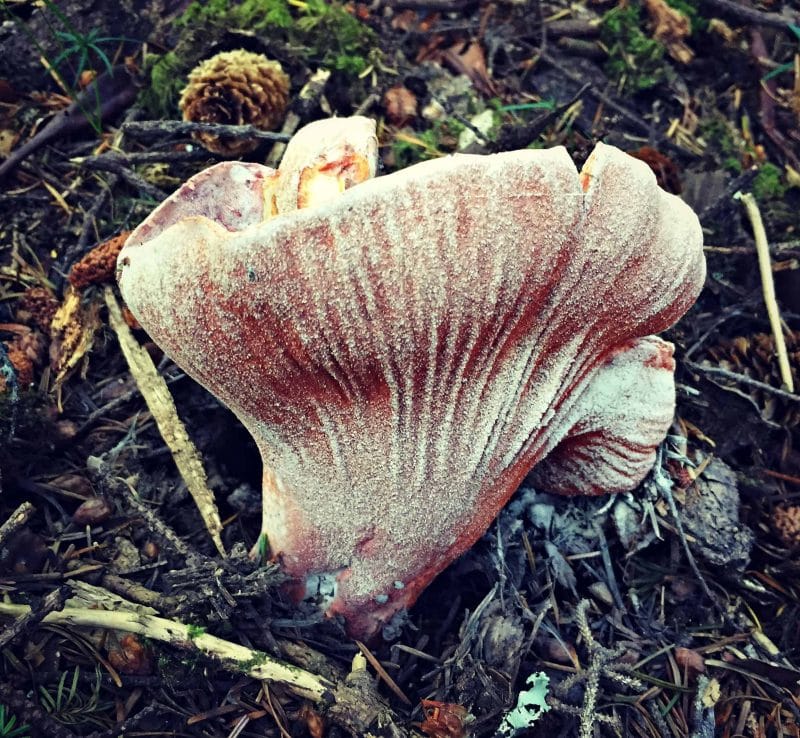
Want to save this post for later?
Foraging for Lobster Mushrooms
Lobster mushrooms are really cool looking, and unmistakable once you know what they look like. They are most often found in the fall after the rains come, but in some areas can be found in the summertime as well.
This one was particularly gorgeous, and I tried to rack my brain for what it could be, as I had never found a lobster mushroom before. When we looked at the other side of it we saw that we weren’t the only ones enjoying it’s beauty.
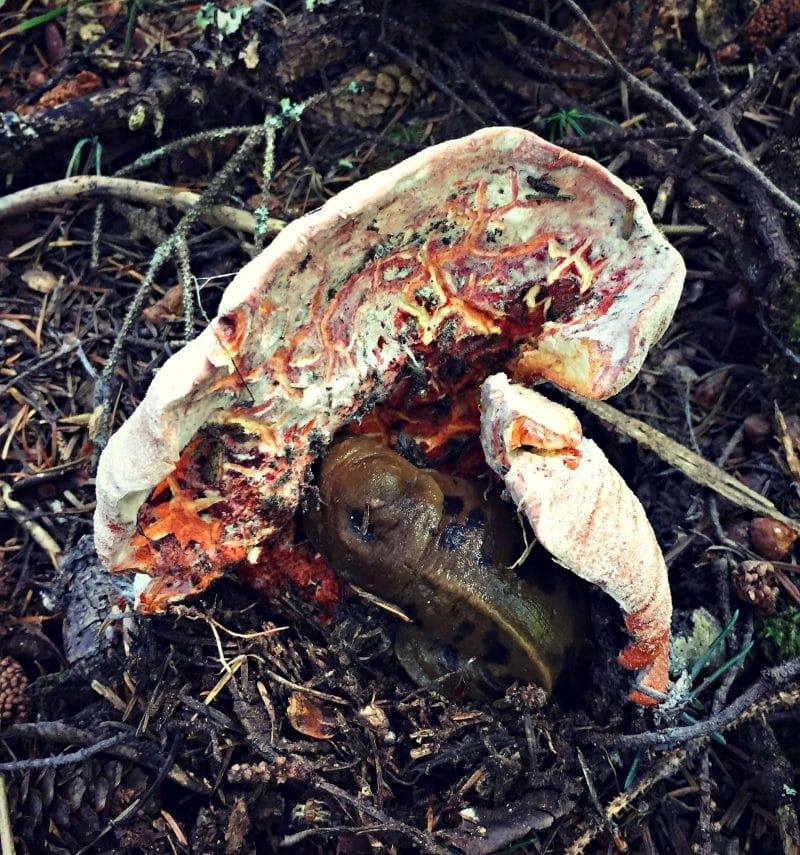
This slug was slowly eating away at it, which gave me some hope of its edibility. Then I connected the dots in my head and realized what this was… a lobster mushroom!
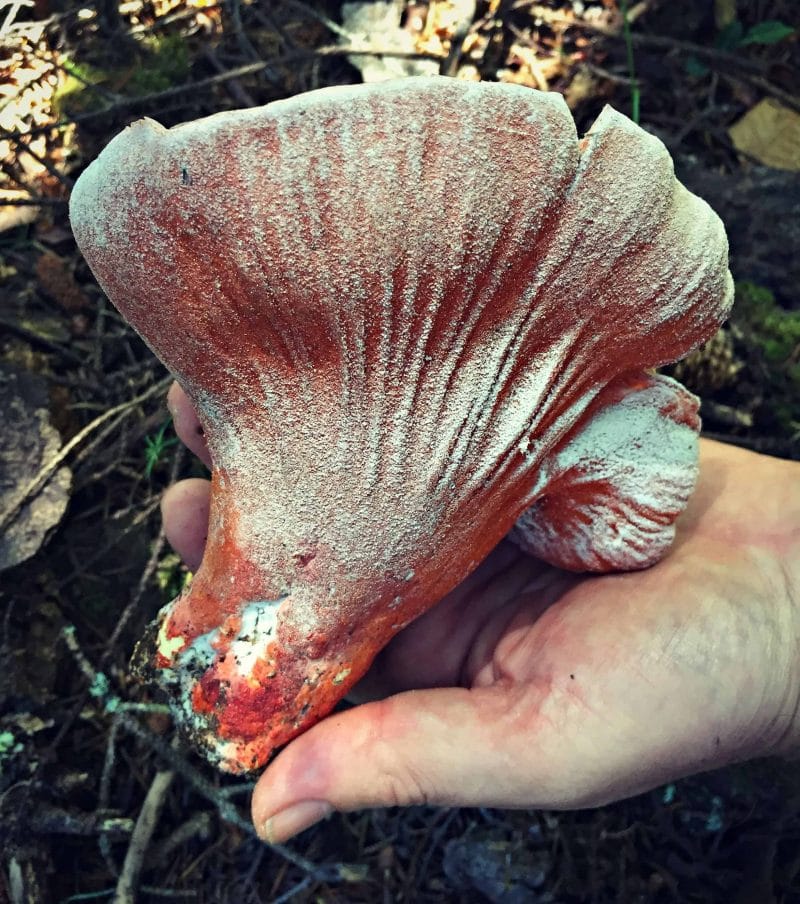
I almost knew for sure that’s what it was, as it’s a common edible mushroom in this area, but I double checked my super awesome mushroom guidebook, All That the Rain Promises and More by David Arora, just to be sure. It turns out that lobster mushrooms aren’t really even mushrooms at all, but parasitic fungi that feed on other mushrooms and eventually envelop them. Pretty cool, huh? Nature is awesome!
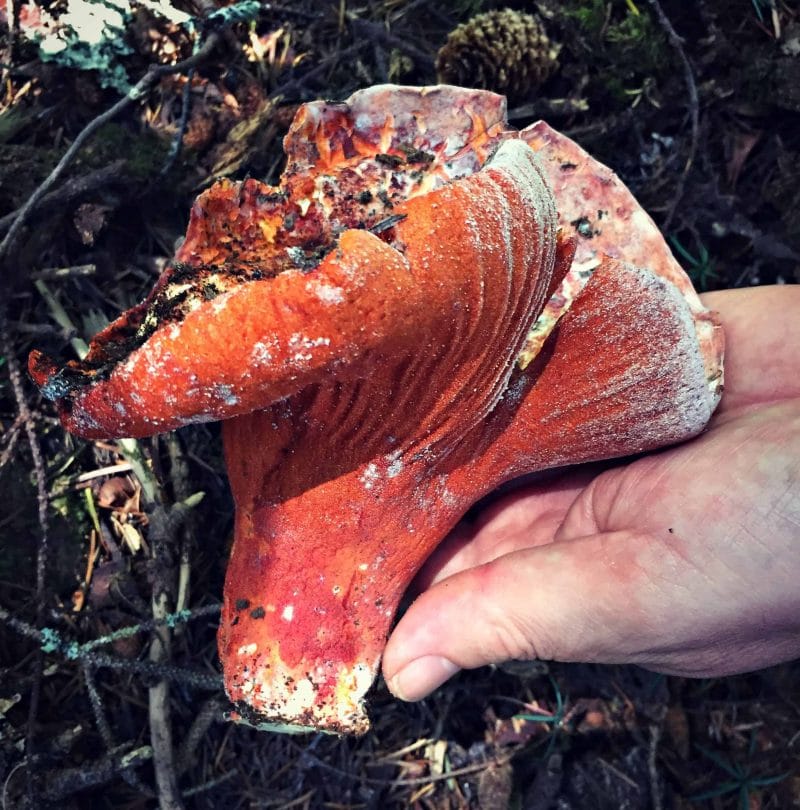
Anyways, that’s exactly what this was, and thankfully there are no poisonous look-alikes to be worried about. And don’t worry, we left the mushroom stump for the slug (although I have little sympathy for them after what they did to my garden earlier this summer).
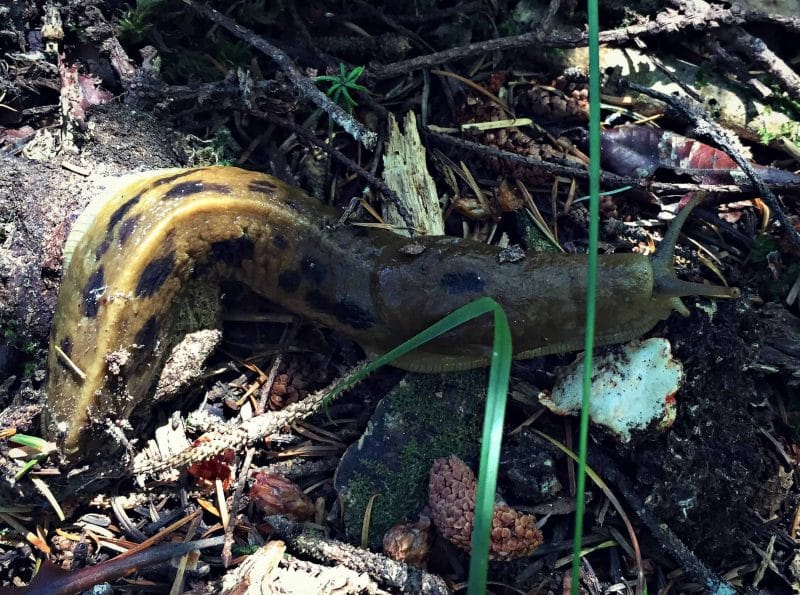
We brought it home and cleaned it off as best we could.
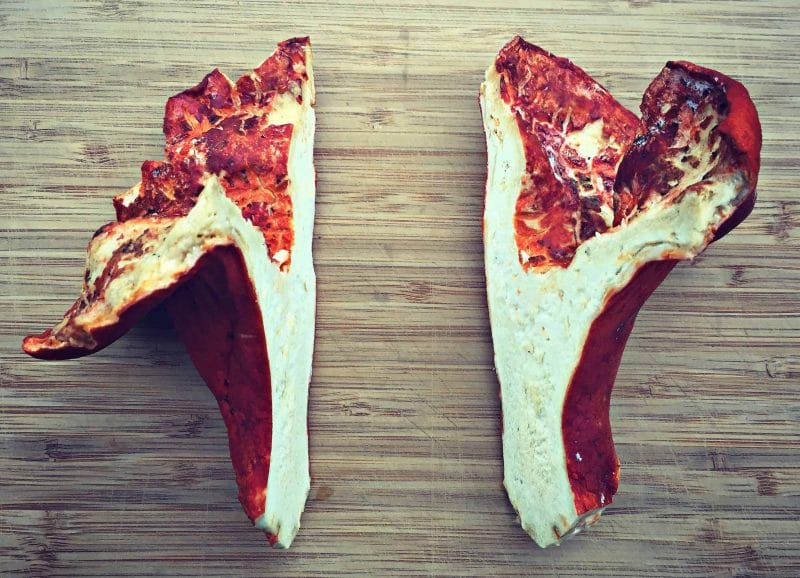
Once you cut it open you can really see why it’s called a lobster mushroom, as it really does resemble a lobster with its hard red exterior and white interior.
 Lobster Mushroom Mac and Cheese
Lobster Mushroom Mac and Cheese
We spent a good portion of our drive home deciding how we were going to cook this baby up. Since real lobster mac and cheese is a special delicacy that we both enjoy on rare occasions, we decided to go with that!
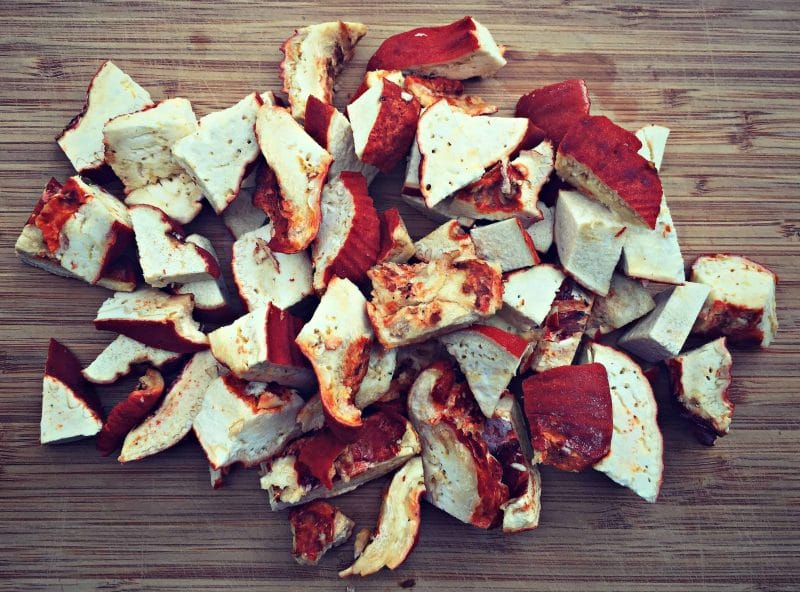
Made from scratch with bacon, plus kale from the garden!
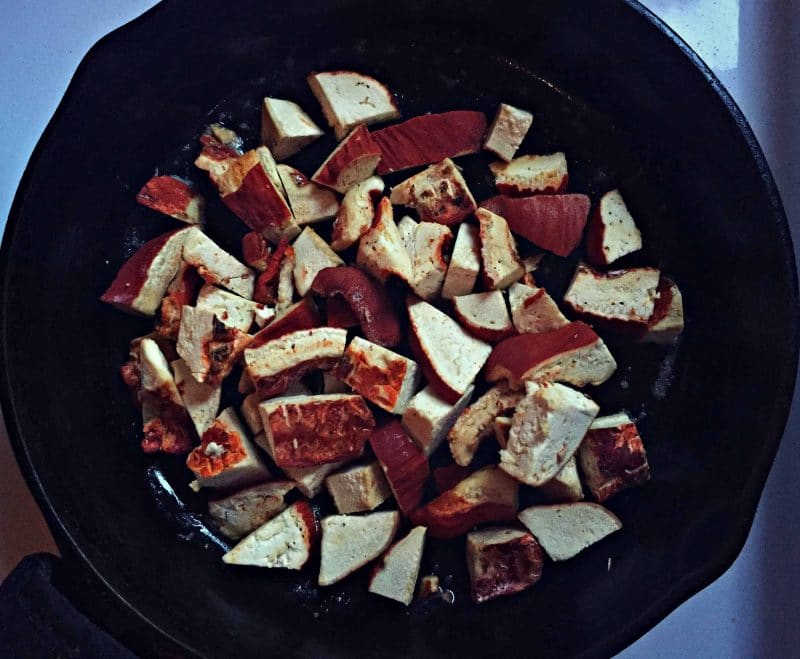
But really, all you have to do is cook the mushrooms in butter with a tiny bit of seasoning and they’re delicious on their own!
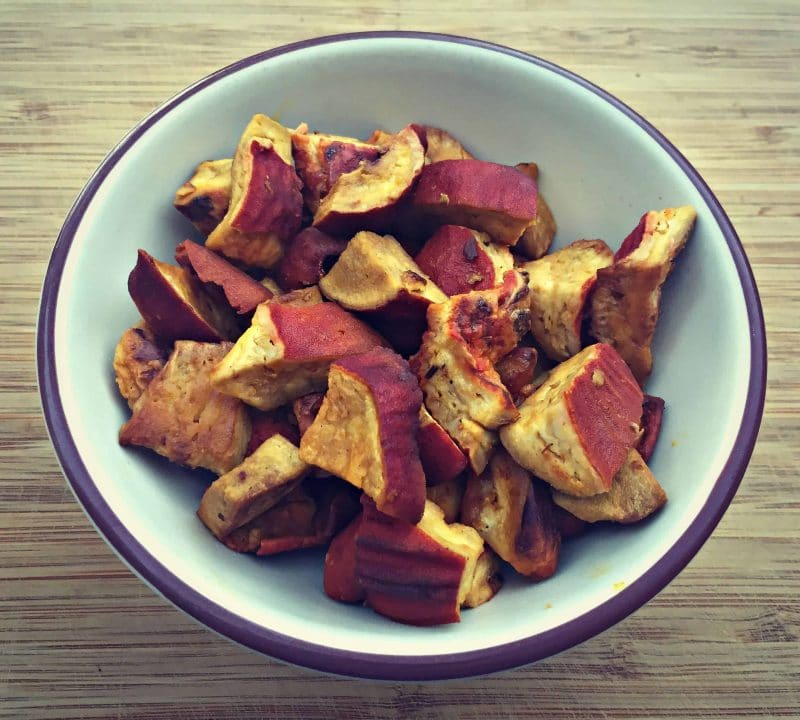
I can’t complain about this mac and cheese, though. So delicious with an earthy mushroom flavor. Plus, bacon. And kale.
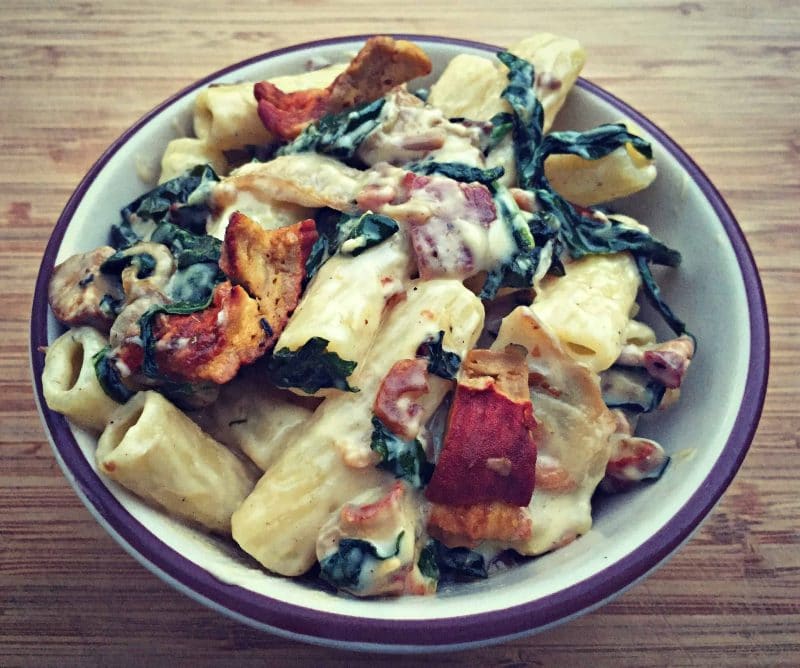
Searching for mushrooms rarely turns out as planned, but is often rewarding in other ways. I was happy just to find any edible mushroom at all, even though it wasn’t what I was originally looking for. It was still just as tasty! Sometimes you don’t find any mushrooms at all, but because you were looking you will still see all sorts of cool things that you wouldn’t notice otherwise. You may find other edible plants, or you may just see cool bugs or flowers or even moss that has an interesting pattern. It really is all about the adventure of being out in the woods and paying attention. The mushrooms that you may or may not find are only an added benefit. So keep your eyes peeled and start foraging for lobster mushrooms!
Mushroom Foraging Guides
Familiarize yourself with these mushrooms so if you stumble across them in the woods you can easily make an id!
- Morels
- Lion’s Mane Mushrooms
- Chanterelles
- Yellowfoot Chanterelles
- Oyster Mushrooms
- Chaga
- 5 Easy to Identify Mushrooms
Have you ever found lobster mushrooms?

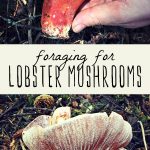
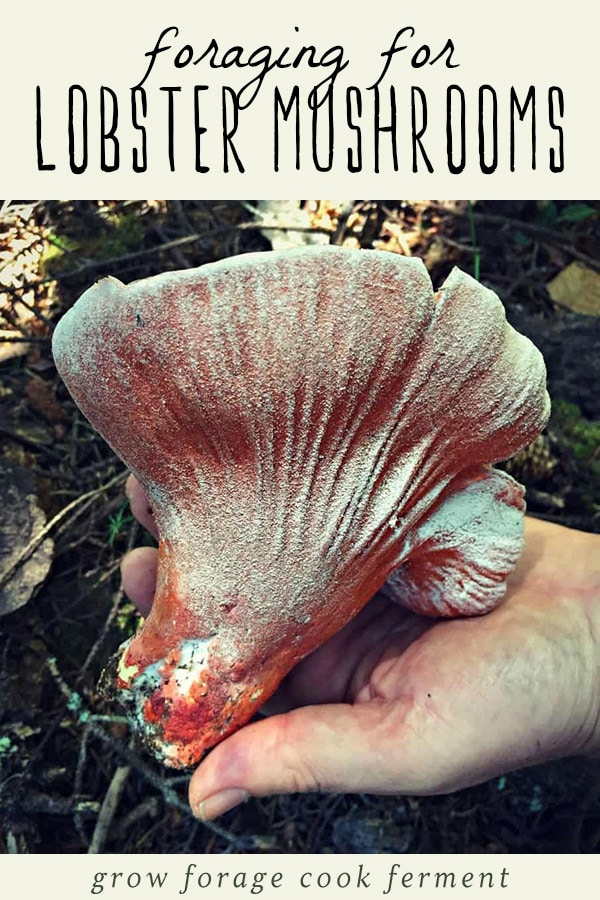
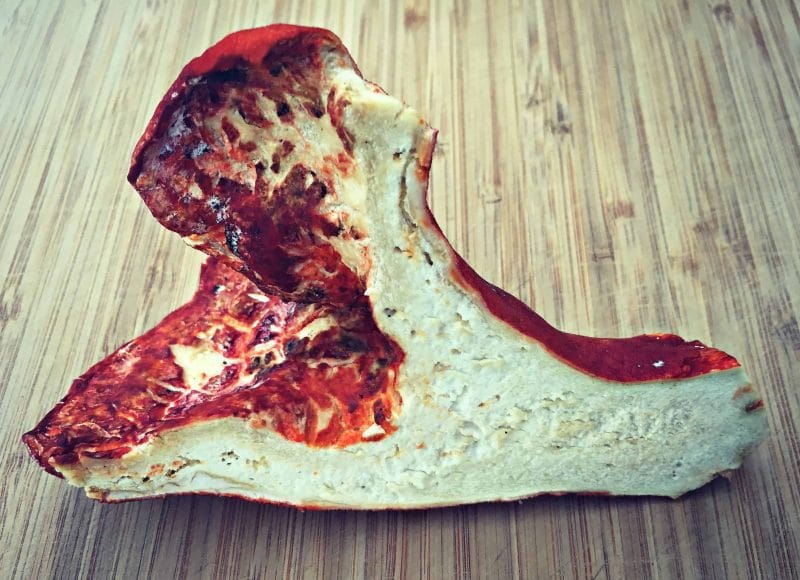 Lobster Mushroom Mac and Cheese
Lobster Mushroom Mac and Cheese
Reading in my field guide (National Audubon field guide) for lobster mushrooms and says to eat with caution. You must first identify the host as it could potentially parasitize a poisonous species, is this something to be concerned about as I did not see it mentioned in your writtings.
As long as the mushroom is completely parasitized (they typically only parasitize edible Russula or Lactarius species) it is safe to eat. People have been eating lobster mushrooms for hundreds of years without issue and there’s only a very, very slim chance that you may become sick from eating one (usually from misidentifying the Hypomyces species altogether). All That the Rain Promises and More is a great mushroom foraging guide!
I recently found what appears to be Lobster Mushrooms. They do not have the underside of a Chanterelle but they look like the ones in your picture.
They were in the same vicinity as the Chanterelle’s and are much firmer
I have a regular spot for Lobsters, and I collect them every year, but I still haven’t found a recipe I like. They smell so wonderfully lobster-y, but that doesn’t come through in the flavor. I’ve tried everything I can think of, including poaching them long and slow in lobster stock. The texture is great and the flavor is nice and mushroom-y, but I don’t get lobster, like I do with the smell. Did you get lobster flavor, or was it just good and mushroom-y?
No, no mistaking lobster for chicken of the woods. It sounds like you did find a chicken of th woods. Only take the tender edges of chicken of the woods, though. As to the lobster mushrooms, EW, ICK! All those holes? WORM TUNNELS. I don’t care for the ‘extra protein’, and this is one of the main reasons I don’t like porcini, either. I was sauteing some nice #1 buttons, and caught movement…STILL had worms, even though it appeared to be a #1! (#1, in porcini grading, is usually a button, or young mushroom, pores white and not yet developed, and cut in half, shows no sign of worms.)
Forgot to add: in the PNW, lobsters prefer spruce roots. Whereas chanterelle seems to prefer Douglas fir or hemlock, and will even colonized if the tree has been removed. If you find them in the grass, most likely there used to be a tree in the area, and they can continue quite a ways from the trunk of the trees/missing trees.
Can you mistake a lobster mushroom for chicken of the woods? I have found what looks like lobster but in the shape of chicken of the woods on a stump . It was a huge disk of varying shapes. Very large and with yellow underside. And white flesh.
Am really really wishing you would share your recipe for the lobster mushroom kale Mac and cheese. Looks delicious and I have the mushrooms just waiting to be aavoured
All you really need to do is follow any homemade mac and cheese recipe, then add in satueed lobster mushrooms!
Very cool. I found two lobster mushrooms in the Adirondacks last summer, and those are the only two I’ve ever found. But I did not collect them, and it was only later when I checked my field guides that I learned they were lobster mushrooms and edible. I have read they have a lobster like or fishy flavor? Did you find that to be true?
We were so happy when we found it, and luckily we had our guidebook with us to double check. When reading up on them I did see a few mentions of a lobster like flavor, but I didn’t necessarily find that to be true… Just a really meaty and tasty mushroom flavor! There is a definite resemblance to lobster in looks, they even sort of have a red “shell” that is almost brittle.
That’s interesting, because I’ve been finding that other mushrooms reputed to taste like this or that meat, don’t taste like it at all. They all taste like mushrooms to me – each slightly different, but always mushroomy and not meaty!
I meant to say maitake – or hen of the forest – I really don’t know the names just what to look for. I also pickle that mushroom if I find a lot of it. One year I had over 50 lbs but it is hard to clean.
Very interesting texture and looks very meaty! Yum! I have foraged for only one type of mushroom here in the US on the east coast. It looks like shitake and grows under oak trees, often called head of the forest, it comes out only in the fall. For this mushroom to come up it must be damp, between 45 and 60 degrees and I have often found that a full moon will bring them out overnight. I wonder if the your mushrooms you originally were looking for have a specific temp requirement and season too?
Colleen, just make sure they are not poisonous!
Yes, of course! Luckily, lobster mushrooms are very easy to identify without any poisonous look alikes. But, either way, you should always check a mushroom guidebook, or better yet, go with someone who is experienced!